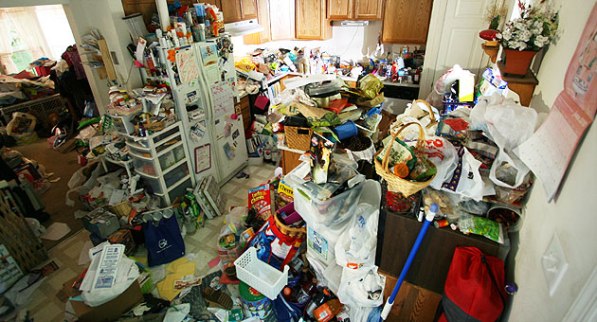
22 Mar Obsessive Compulsive Disorder and Other Compulsive Behaviours: Part 2
Picture this.
A house, filled with everything that has ever meant something to you. A memory attached to every item. When you have to get rid of something, you feel like you are losing a little piece of yourself. This in the end makes you unwilling to get rid of anything at all. Slowly but surely, the house starts to fill until one day you can’t see the floor. But that is okay. As long as you have your things, you will be okay. You are ashamed of letting others see how you live, so you hide it. You stay in your home, rarely going out unless it is absolutely needed. One day you get a surprise visit from a loved one. You are sleeping somewhere among the piles so you don’t hear them enter the house. They see what is going on and confront you. Your defenses go up. You become angry and aggressive because they have violated your privacy. You tell them to leave you alone, that you are just fine with how things are and that you don’t need their help. Your cover has been blown, soon everyone will know your secret. But where do you go from here?
Compulsive hoarding is just that. A compulsive need to collect things, and the unwillingness or inability to give those things up. These items take over rooms, apartments, and full houses, causing unsafe living conditions, posing severe health risks, and damaging relationships. This disorder is separate from OCD, however, like OCD many of those suffering are well aware of their irrational behaviors.
People will often collect things that other people would find not useful or of little value. Things like junk mail, newspapers, clothes that “might” fit one day, broken things and garbage. They will place high value on them, and this is likely the reason that it is so hard for them to try and give them up. People can also collect animals, becoming deeply attached to a large number of animals that they can not properly care/provide for.
There is no one cause to this disorder. Like many disorders, the causes are multiple and vary from person to person. These causes can include:
- Trauma
- Anxiety
- Another pre-existing disorder
- Family History
Whatever the cause, compulsive hoarding wreaks havoc on an individual’s livelihood, and is an extremely difficult disorder to receive the proper treatment and support for.
Management and treatments for compulsive hoarding vary from individual to individual, depending on their situation. Behavioural therapy has often times been found to be effective. There are many processes that a therapist can walk a client through to come to terms with why the behaviour exists and develop a plan of action on how to approach treatment in a way that will make the client most comfortable. Often times the first thing that is needed is a gradual exposure to the anxiety experienced when trying to get rid of things. This will allow the client to begin to formulate a plan as to how they are going to get their living place cleaned up so that is habitable (if this is at all possible). Therapy to address the behaviours and anxiety is an ongoing process throughout treatment. Depending on the case, the client may be prescribed medication to treat any underlying disorders in order to be able to participate fully and cohesively in treatment.
Recovery and treatment are possible. It is a long and tough process, but with the right supports and treatment plan, anyone can go on to live a happy and fulfilling life.
Listed below are resources for OCD and other compulsive behaviours.


